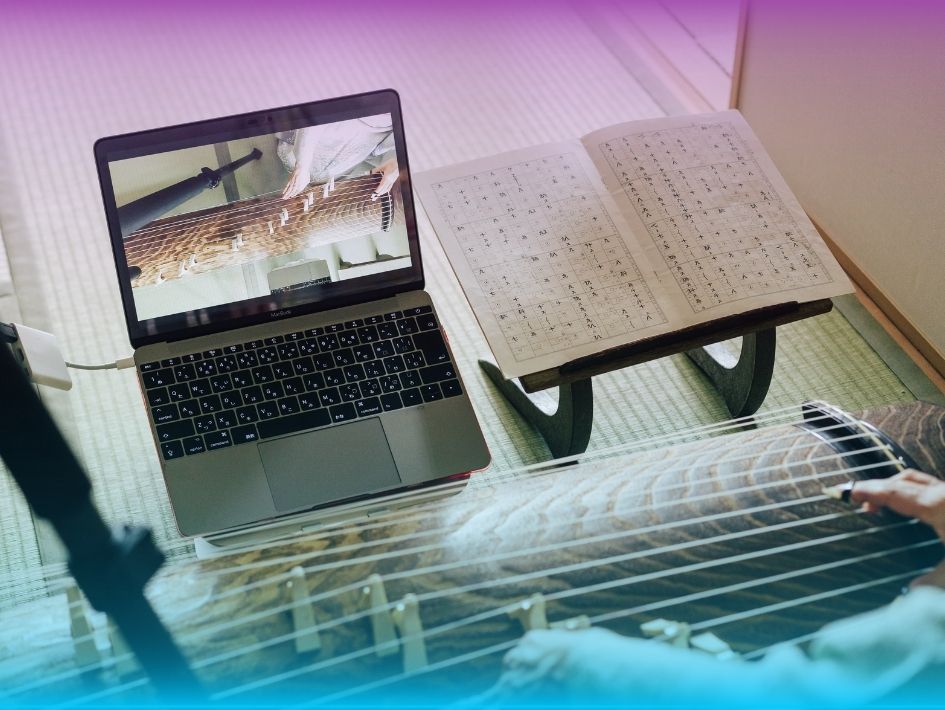Virtual instruments in music and online resources are becoming essential tools for teachers, changing how students learn and engage with music. These tools offer fun, affordable ways for students to explore sounds, build skills, and create live music tracks.
Online resources now offer a wide range of instructional tools. From sheet music and video tutorials to interactive exercises that keep students motivated and challenged. With these resources, teachers can improve their students' learning experiences like never before.
But how exactly can virtual instruments and online resources benefit your classroom? Let's find out!
Understanding Virtual Instruments in Music Education
Virtual instruments are digital versions of traditional instruments. It allows students to experience, practice, and perform using technology. They range from digital pianos and guitars to wind instruments and percussion. Often, they are made to sound and function like the real instruments they replicate.
These tools can be accessed through a variety of devices. It includes computers, tablets, and smartphones, making them easy to add to lessons.
Here's a breakdown of popular virtual instruments and how they can benefit students:
Digital Keyboards and Pianos
Virtual pianos are a great starting point for teaching piano basics. Many digital keyboards have adjustable tempos, built-in songs, and guided lessons to help students progress.
String Instruments
Virtual guitars, violins, and cellos give students an opportunity to try stringed instruments. They allow
students to learn chords and finger placements and play along with tunes without needing the actual instrument.
Wind Instruments
Digital flutes, clarinets, and saxophones help students explore wind instrument skills and experiment with sound without physical instruments.
Drums and Percussion
Virtual drums provide rhythm exercises. It allows students to practice beats and learn tempo more interactively.
Why Use Virtual Instruments in Music Education?
Virtual instruments offer many benefits that make them a valuable addition to music education. For teachers, they are a flexible, affordable way to bring more resources into the classroom. Here's why:
- Accessibility. Virtual instruments can be accessed anywhere with an internet connection. This flexibility makes it easy for students to practice at home, at school, or even on the go.
- Affordability. Since many virtual instruments are free or lower-cost compared to physical instruments, they are budget-friendly options that make it possible for more students to engage with music.
- Variety of Instruments. Virtual instruments allow students to explore different instruments. This helps them find what they enjoy without needing to buy many instruments.
- Improved Learning Support. Many virtual instruments come with tutorials and built-in guides. So, it makes learning engaging and supports beginners in their practice.

The Importance of Online Resources for Teachers
Online resources work well with virtual instruments. They give teachers many tools to make lessons better and more engaging. With everything from sheet music libraries to fun, interactive tutorials, these resources let teachers adjust their lessons to fit how each student learns best.
This makes learning more interesting and helpful for everyone.
Essential Online Resources for Teachers
YouTube Music Tutorials
YouTube is a valuable resource with countless tutorials for every skill level. Teachers can find videos that break down popular songs, show techniques, and explain music theory concepts.
Sheet Music Direct and Musescore
These sites have lots of sheet music you can download for any instrument and skill level. Teachers can find nearly any song or piece to fit their students' needs and interests.
GarageBand and Soundtrap
GarageBand is a great tool for Apple users to create tunes. Soundtrap is an online studio where students can team up to make tunes in real time, even from different places.
This website provides lessons, exercises, and tools to help students
understand music theory. It's a useful resource for teachers to support music concepts through exercises that students can complete online.
Noteflight
Noteflight is an easy-to-use tool for creating and sharing sheet music. Teachers can use it to help students learn to read and write notes. This
allows them to compose their own pieces and explore musical notation.

How Virtual Instruments and Online Resources Support Different Learning Styles
Each student learns in their own way, and virtual instruments and online tools help teachers meet their needs. Here's how:
- Visual Learners. Online tutorials and videos on platforms like YouTube give visual learners a clear way to understand techniques, finger placements, and timing.
- Auditory Learners. Many online resources offer audio guides, metronomes, and play-along features that help auditory learners focus on sound, pitch, and rhythm.
- Kinesthetic Learners. Interactive virtual instruments and exercises allow kinesthetic learners to actively take part by simulating the physical actions of playing an instrument.
- Collaborative Learners. Tools like Soundtrap support collaboration. This allows students to work together, share ideas, and learn from one another, making melody creation a group experience.
Integrating Virtual Instruments and Online Resources into the Classroom
Incorporating these tools into your curriculum can be easy and impactful. Here are some strategies for successful integration:
Set Learning Goals
Begin by setting clear goals for what you want students to do. These could range from mastering specific skills, understanding theory, or creating a musical project.
Use a Blended Approach
Combining virtual instruments with real instruments can help students get a well-rounded experience, understanding both the digital and physical aspects of music.
Encourage Independent Learning
Online resources can encourage students to practice and explore music outside class. Assigning them specific exercises or songs to learn through these tools can inspire them to keep improving.
Provide Feedback and Support
As students engage with these tools, be sure to offer guidance and feedback. This helps students stay motivated and understand areas where they can improve.
Tips for Making the Most of Digital Tools
To maximize the benefits of virtual instruments and online resources, here are some practical tips:
- Explore Free Trials. Many online tools and apps offer free trials or basic versions, so you and your students can test them out before buying.
- Set Up a Digital Learning Space. Ensure students have a cozy, quiet place to use virtual instruments and tools, either at school or home.
- Check for Interactive Features. Look for resources that offer interactive features like metronomes, tuners, and recording options. These can enhance the learning experience and make practice more engaging.
- Celebrate Progress. Recognize students' achievements as they master new skills or complete online exercises. This encouragement can make digital learning feel rewarding.
Summary
Virtual instruments and online resources are helpful tools for teachers, giving them new ways to teach music. These tools make learning easier, more flexible, and more affordable so every student can enjoy and connect with music.
With interactive lessons, sheet music you can download, and online spaces to work together, these virtual tools can make the class more exciting and encourage students to try out music in fresh, fun ways.
Looking for More?
Looking for more ways to enhance your music curriculum?
Visit Muzeg for more tips, resources, and ideas to help you bring engaging, high-quality music education to your students!
Key Takeaways
Using virtual instruments and online tools in class can really improve students' learning experiences. These tools offer access to a wide range of sounds, tutorials, and practice exercises that traditional methods may not provide, allowing students to explore music in ways that fit their needs and interests.
This provides both access and affordability that might not be possible with traditional methods. As these tools become more popular and valuable, they give teachers a fun way to spark students' love for music.
By using these resources, teachers can help students reach their musical potential and build confidence, creativity, and skill. Using digital tools creates many learning chances, making music education easier, more fun, and rewarding for all.

